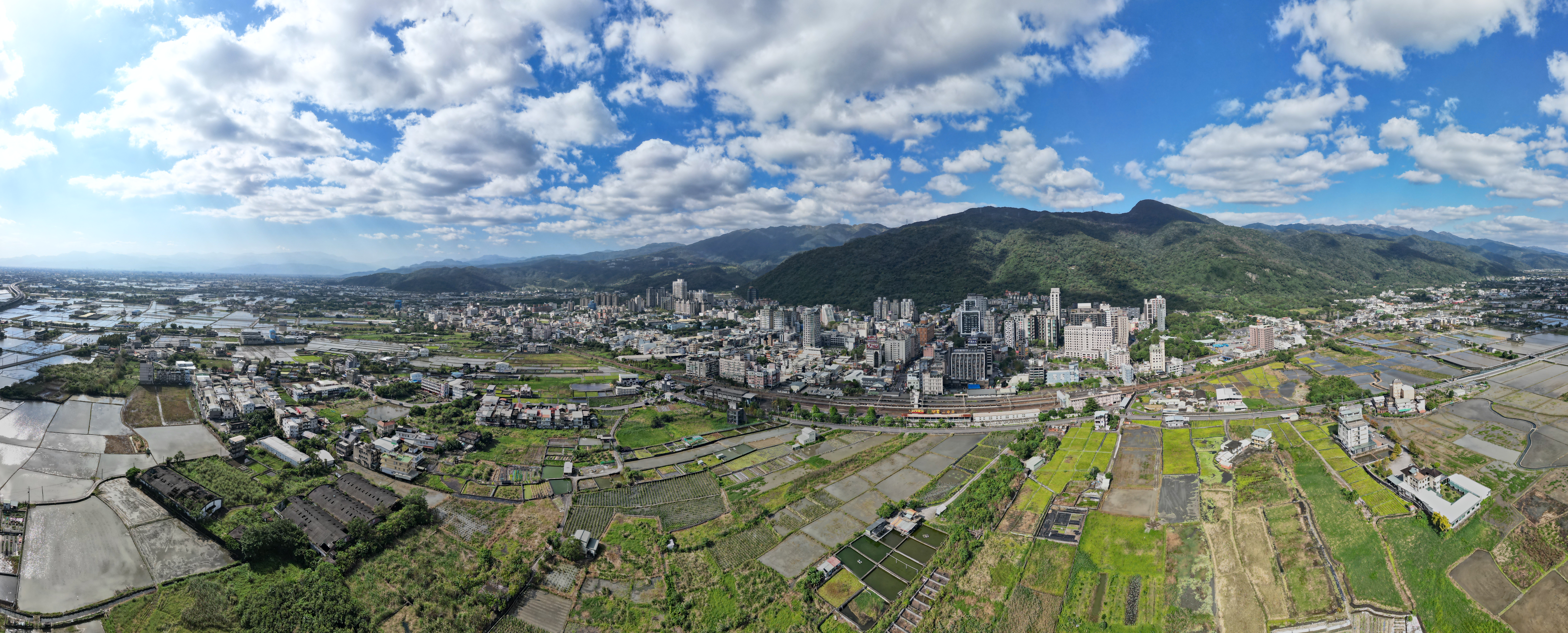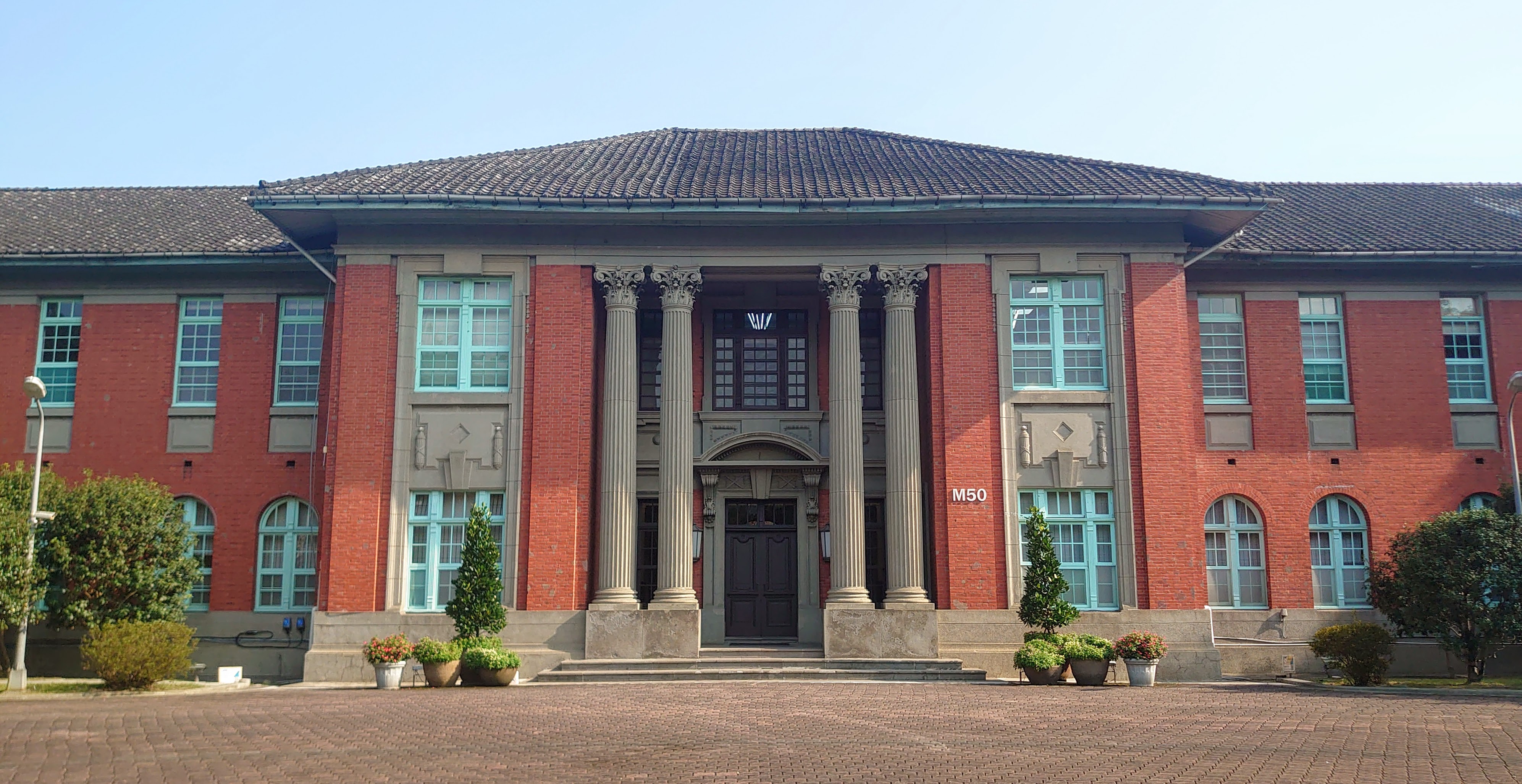|
Lanyang Museum
The Lanyang Museum (LYM; ) is a museum about the local area in Toucheng Township, Yilan County, Taiwan. History Engineering In 1989, local Yilan personnel proposed the establishment of Kailan Museum. In December 1992, Yilan County Government established the Museum Preparatory and Planning Committee and the official name of the museum was chosen to be Lanyang Museum. The museum location was chosen to be near Wushi Harbor area in Toucheng Township. In September 1994, the Yilan County Government appointed National Museum of Natural Science and Building and Planning Research Foundation of National Taiwan University to form the planning team to implement Lanyang Museum Overall Development and Planning Research which was completed in 1995. In March 1999, the Lanyang Museum Preparatory Office was established. Artech architecture was awarded the design and construction for the museum in April 2000. Procurement In October 2001, the Museum section of Cultural Affairs Bureau of Yilan Coun ... [...More Info...] [...Related Items...] OR: [Wikipedia] [Google] [Baidu] |
Toucheng
Toucheng Township () is an urban township in Yilan County, Taiwan. The township includes Guishan Island and Guiluan Island in the Philippine Sea. The Senkaku Islands, known in Mandarin as the Diaoyu Islands, are claimed as part of the township. History Toucheng was formerly called ''Thau-ui'' (). Toucheng Township () was established on 9 September 1946. Toucheng Township was upgraded to an urban township () on 1 January 1948. Geography * Area: 100.89 km2 * Population: 29,890 people (2014) Administrative divisions Toucheng includes twenty-five urban villages: *Shicheng/Shihcheng (Shih-ch'eng-tzu, Sekijōshi; ), Dali (Ta-li-chien, Dairikan; , 大里簡), Guishan (Kuei-shan, Kīzan; ), Daxi (Ta-ch'i, Taikei; ), Gexing (Ho-hsing, Gōkō; ), Gengxin (), Waiao (Wai-ao, Gaiō; ), Gangkou (Chiang-k'ou, Kōkō; ), Wuying (), Dakeng (), Chengtung (), Chengbei (), Chengxi (), Chengnan (), Zhuan (), Xinjian (), Baya (), Fucheng (), Jinmian (Hsiao-chin-mien, Shō-kimmen; , 小金� ... [...More Info...] [...Related Items...] OR: [Wikipedia] [Google] [Baidu] |
Cuesta
A cuesta (from Spanish ''cuesta'' "slope") is a hill or ridge with a gentle slope on one side, and a steep slope on the other. In geology the term is more specifically applied to a ridge where a harder sedimentary rock overlies a softer layer, the whole being tilted somewhat from the horizontal. This results in a long and gentle backslope called a dip slope that conforms with the dip of resistant strata, called caprock. Where erosion has exposed the frontslope of this, a steep slope or escarpment occurs. The resulting terrain may be called scarpland. Definition In general usage, a cuesta is a hill or ridge with a gentle slope (backslope) on one side, and a steep slope (frontslope) on the other. The word is from Spanish: "flank or slope of a hill; hill, mount, sloping ground". In geology and geomorphology, cuesta refers specifically to an asymmetric ridge with a long and gentle backslope called a dip slope that conforms with the dip of a resistant stratum or strata, called cap ... [...More Info...] [...Related Items...] OR: [Wikipedia] [Google] [Baidu] |
Buildings And Structures Completed In 2010
A building, or edifice, is an enclosed structure with a roof and walls standing more or less permanently in one place, such as a house or factory (although there's also portable buildings). Buildings come in a variety of sizes, shapes, and functions, and have been adapted throughout history for a wide number of factors, from building materials available, to weather conditions, land prices, ground conditions, specific uses, prestige, and aesthetic reasons. To better understand the term ''building'' compare the list of nonbuilding structures. Buildings serve several societal needs – primarily as shelter from weather, security, living space, privacy, to store belongings, and to comfortably live and work. A building as a shelter represents a physical division of the human habitat (a place of comfort and safety) and the ''outside'' (a place that at times may be harsh and harmful). Ever since the first cave paintings, buildings have also become objects or canvasses of much artistic ... [...More Info...] [...Related Items...] OR: [Wikipedia] [Google] [Baidu] |
2010 Establishments In Taiwan
1 (one, unit, unity) is a number representing a single or the only entity. 1 is also a numerical digit and represents a single unit of counting or measurement. For example, a line segment of ''unit length'' is a line segment of length 1. In conventions of sign where zero is considered neither positive nor negative, 1 is the first and smallest positive integer. It is also sometimes considered the first of the infinite sequence of natural numbers, followed by 2, although by other definitions 1 is the second natural number, following 0. The fundamental mathematical property of 1 is to be a multiplicative identity, meaning that any number multiplied by 1 equals the same number. Most if not all properties of 1 can be deduced from this. In advanced mathematics, a multiplicative identity is often denoted 1, even if it is not a number. 1 is by convention not considered a prime number; this was not universally accepted until the mid-20th century. Additionally, 1 is the s ... [...More Info...] [...Related Items...] OR: [Wikipedia] [Google] [Baidu] |
List Of Museums In Taiwan
This is a list of museums in Taiwan, including cultural centers and arts centres. Kaohsiung City * Chung Li-he Museum * Cijin Shell Museum * Fongshan Community Culture Museum * Former British Consulate at Takao * Hamasen Museum of Taiwan Railway * Jiasian Petrified Fossil Museum * Kaohsiung Astronomical Museum * Kaohsiung Hakka Cultural Museum * Kaohsiung Harbor Museum * Kaohsiung Museum of Fine Arts * Kaohsiung Museum of Fisheries Civilization * Kaohsiung Museum of History * Kaohsiung Museum of Labor * Kaohsiung Vision Museum * Meinong Hakka Culture Museum * National Science and Technology Museum * Republic of China Air Force Museum * Soya-Mixed Meat Museum * Taiwan Pineapple Museum * Taiwan Sugar Museum * Takao Railway Museum * Xiaolin Pingpu Cultural Museum * YM Museum of Marine Exploration Kaohsiung * War and Peace Memorial Park and Theme Hall New Taipei City * Fort San Domingo * Jingtong Mining Industry Museum * Ju Ming Museum * Li Tien-lu Hand Pupp ... [...More Info...] [...Related Items...] OR: [Wikipedia] [Google] [Baidu] |
Taiwan Railways Administration
Taiwan Railways Administration (TRA) is a railway operator in Taiwan. It is an agency of the Ministry of Transportation and Communications, responsible for managing, maintaining, and running conventional passenger and freight railway services on 1097 km of track in Taiwan. Since Taiwan is heavily urbanised with a high population density, railways have played an important part in domestic transportation since the late 19th century. Passenger traffic in 2018 was 231,267,955. The agency's headquarters are in Zhongzheng District, Taipei. Overview Railway services between Keelung and Hsinchu began in 1891 under China's Qing dynasty. Because the railway was completely rebuilt and substantially expanded under the operated by Formosa's Japanese colonial government (1895–1945), the network's Japanese influence and heritage persists. Similarities between the TRA and the Japan Railways (JR) companies can be noted in signal aspects, signage, track layout, fare controls, sta ... [...More Info...] [...Related Items...] OR: [Wikipedia] [Google] [Baidu] |
Toucheng Railway Station
Toucheng () is a railway station on the Taiwan Railways Administration Yilan line located in Toucheng Township, Yilan County, Taiwan. History The station was opened on 25 April 1920. Around the station * Lan Yang Institute of Technology * Lanyang Museum * Lee Rong-chun Literary Museum * Toucheng Old Street * Wushi Harbor See also * List of railway stations in Taiwan There are currently six operating railway systems in Taiwan: The two Inter-city rail systems, Taiwan Railways and Taiwan High Speed Rail, have several overlaps in station names. See below ''Taiwan High Speed Rail'' section for their relations in ... References 1920 establishments in Taiwan Railway stations in Yilan County, Taiwan Railway stations opened in 1920 Railway stations served by Taiwan Railways Administration {{Taiwan-railstation-stub ... [...More Info...] [...Related Items...] OR: [Wikipedia] [Google] [Baidu] |
Kris Yao
Kris Yao (; born December 1951) is a Taiwanese architect, and the founder and head architect at KRIS YAO , ARTECH in Taipei and Shanghai. Biography Yao was born and raised in Taipei, Taiwan. Yao received his Bachelor of Architecture at Tunghai University in 1975, and received his Masters in Architecture at the University of California, Berkeley, in 1978. Kris Yao , Artech Established by Kris Yao in 1985, KRIS YAO , ARTECH is an architectural firm composed of more than 160 professionals with offices in Taipei and Shanghai. The firm's projects are mainly located in the Greater China area, but are also found in the United States, Europe, and South Asia. Project categories range from corporate, residential, cultural, educational, hospital, commercial, transportation, industrial architecture design, and urban planning, etc. The award-winning and selected works including: Lanyang Museum, China Steel Corporation Headquarters, Water-Moon Monastery, and Wuzhen Theater, etc. Se ... [...More Info...] [...Related Items...] OR: [Wikipedia] [Google] [Baidu] |
Yilan County, Taiwan
Yilan County, alternately spelled I-lan, is a County (Taiwan), county in northeastern Taiwan, Republic of China. Name The name ''Yilan'' derives from the Taiwanese indigenous peoples, indigenous Kavalan people. Other former names in reference to this area in the Yilan Plain include ''Kabalan'', ''Kavalan'', ''Kavaland'', ''kap-a-lan'', ''Yiland'' and ''Gilan''. Before 2009, the county's official name was transliterated as Ilan. History Early history Since early ages, many people have traveled from far places to Yilan. Taiwanese aborigines, Indigenous tribes that have settled in Yilan are Kavalan people and Atayal people. The Kavalan people came by the sea and lived by the river at Yilan Plain since around 1,000 years ago. They mostly speak the Austronesian languages. Their settlements consisted of small villages along rivers with around 40-50 communities scattered around the area with a total population of approximately 10,000 people. The Atayal people came by crossing ... [...More Info...] [...Related Items...] OR: [Wikipedia] [Google] [Baidu] |
Groundbreaking
Groundbreaking, also known as cutting, sod-cutting, turning the first sod, or a sod-turning ceremony, is a traditional ceremony in many cultures that celebrates the first day of construction for a building or other project. Such ceremonies are often attended by dignitaries such as politicians and businesspeople. The actual shovel used during the groundbreaking is often a special ceremonial shovel, sometimes colored gold, meant to be saved for subsequent display and may be engraved. In other groundbreaking ceremonies, a bulldozer is used instead of a shovel to mark the first day of construction. In some groundbreaking ceremonies, the shovel and the bulldozer mark the first day of construction. Meaning When used as an adjective, the term groundbreaking may mean being or making something that has never been done, seen, or made before; "stylistically innovative works". History Groundbreaking ceremonies have been celebrated for centuries in an attempt to begin the construction ... [...More Info...] [...Related Items...] OR: [Wikipedia] [Google] [Baidu] |
National Taiwan University
National Taiwan University (NTU; ) is a public research university in Taipei, Taiwan. The university was founded in 1928 during Japanese rule as the seventh of the Imperial Universities. It was named Taihoku Imperial University and served during the period of Japanese colonization. After World War II, the Nationalist Kuomintang (KMT) government assumed the administration of the university. The Ministry of Education reorganized and renamed the university to its current name on November 15, 1945, with its roots of liberal tradition from Peking University in Beijing by former NTU President Fu Ssu-nien. The university consists of 11 colleges, 56 departments, 133 graduate institutes, about 60 research centers, and a school of professional education and continuing studies. Notable alumni include Tsai Ing-Wen, current President of the Republic of China, former presidents Lee Teng-hui, Chen Shui-bian and Ma Ying-jeou, Turing Award laureate Andrew Yao, and Nobel Prize in Chemistry ... [...More Info...] [...Related Items...] OR: [Wikipedia] [Google] [Baidu] |







